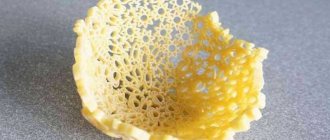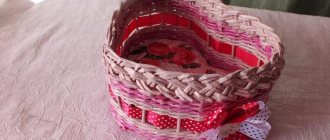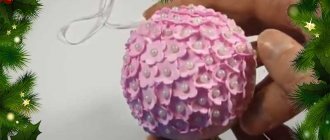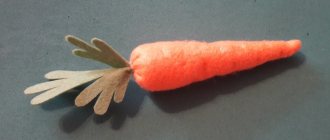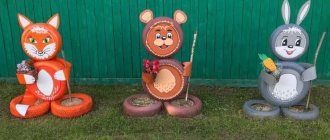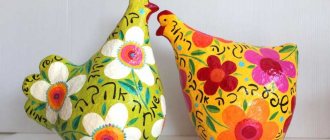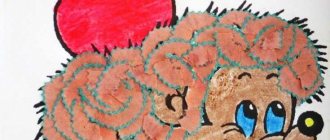Reasons why handmade work is far from cheap
- The time spent on producing one copy will be required many times more than if similar work was performed on a production line.
- Making crafts involves your imagination, rethinking the vision of the finished result of the item, and changing the methodology.
- DIY fabric crafts are always exclusive options that do not have an exact copy.
- Your product is your name.
- A lot of time is spent searching and selecting fabric (even if it’s scraps found at home), threads, and accessories.
- Handmade is always very individual.
- Thorough knowledge of the entire process of making crafts.
- When working on a craft, the master puts high quality first.
- Creating a unique unique thing is not a matter of one hour.
- Your work is always filled with history, soul, its own temperament and character.
If someone thinks it’s too expensive, let them try it themselves.
small toy
A small size fabric pig craft is made from dense pastel colored material.
- Cut out 2 squares and round the corners.
- Measure the length of the side.
- Multiply by 4 and cut off a strip of the calculated length. The width of this strip is equal to the length of one side of the square.
- Sew the strip, the seam is located on the wrong side.
- Sew one square to the end, stuff the toy with cotton wool, foam rubber, and pieces of fabric. If you fill it with dry grass, the product will smell pleasant.
- The second end is connected to the last square.
- The eyes are made from small buttons or beads. To make a snout, 2 oval pieces of scrap are connected, the nostrils are made with two stitches of black thread. The ears are sewn on the sides of the head, round in shape, and not stuffed. For the ponytail, fold a thin strip, stitch along the edge and pull the thread, causing it to curl into a circle. Legs don't do it.
Second life of fabric scraps
Don't throw away any remaining pieces of fabric or items that are out of fashion. From them you can make a huge number of pleasant, cute and simply necessary products. And both experienced craftswomen and novice needlewomen can make them. They will find their use in various areas: in decorating the house, in the garden, these are unique gifts.
Absolutely all types of fabrics are suitable for work. You can work with one type, or you can combine and combine fabric scraps of different structure, properties and texture. Master classes from professionals will teach you how to make crafts from fabric, as well as communication with those who have already fallen in love with this wonderful handicraft.
In the bathroom and hallway
Here, too, there is room for the imagination to run wild and to put the accumulated scraps to work. Rugs of various shapes, sizes and colors have been popular for decades. The uniqueness of such things is that it is almost impossible to repeat them.
To make home rugs, it is better to use knitted items: T-shirts, sweatshirts, sweaters. On the Internet you will find many detailed master classes on such DIY crafts.
Stages of work:
- Cut into strips from clothes that you no longer need, roll into balls
- Sort by color
- Arm yourself with a large crochet hook (craftswomen recommend a tool from 8 to 10mm) and start knitting.
- Cast on 6 air loops and connect them into a ring.
- In each subsequent row, add 6 loops. First, in each loop of the first row, in the second - through one, in the third - through two, and so on until the size you need.
There are options for making similar rugs without special tools. There are many techniques offered: braiding and joining them together, using very small pieces and creating a fluffy effect, weaving. Such fabric products will decorate not only a city apartment, but will be appropriate in a country house or dressing room.
Note!
- How to properly make a birdhouse with your own hands from scrap materials: we create an original birdhouse according to sketches
- How to make candles with your own hands: instructions for making wax, gel, scented, homemade decorative candles with a wick
- What you can make from foamiran with your own hands: we create flowers, Christmas tree decorations, snowflakes, three-dimensional paintings (photo + video)
In addition, you can make various organizers for bathroom accessories and sundries, laundry baskets, holders for toilet paper, towels.
Tack
This item is necessary for every housewife. To make this piece you will need a little fabric, time and basic manipulation of a needle, thread and scissors. Even novice needlewomen can make such a product.
Manufacturing Features
The art of creating floral arrangements from fabric and individual floral elements is constantly evolving. For work, one type of fabric or combined flaps can be used. The manufacturing method depends on the type of decor - a finishing element for a dress, a headband or a flower on a stem for a bouquet, wreath, or wedding composition. Analogs that are practically indistinguishable from natural plants can be made using the following techniques:
- Sewing. Use fabric pieces or ribbons. To create flowers from satin and silk you will need thread, needle, scissors;
- Kanzashi. Square pieces of fabric are rolled into petals. For painstaking work you will need satin ribbons, scissors, tweezers, a candle;
- Komono. The sewing technique creates soft flowers from small pieces of fabric;
- Ganutel. Threads and wire springs are used;
- Guilloche. All kinds of patterns are burned onto fabrics with a soldering iron;
- Corrugation. To create the relief, special balls, tweezers, and skewers are used.
Recommendations regarding the manufacturing process
These tips are important in any case, regardless of the chosen pattern. When working on this kitchen accessory, you should focus on the following points:
- to create a potholder, linen or cotton fabric is most suitable;
- flammable material not suitable for such products;
- when creating this kitchen attribute, a layer is always necessary;
- the selected scraps require washing and ironing before cutting, so that at the end of the work the fabric does not shrink, which will ultimately negatively affect the finished product;
- It is also worth checking the fabric for its ability to shed;
- When cutting out details, do not forget to make allowances for seams.
Making an elephant from felt
Instructions for making felt elephants:
- Prepare a sketch of the toy and draw a simple elephant. You can also find a pattern on the Internet and simply draw it or print it. You choose the size of the product yourself. The toy can be either small or large.
- Transfer the pattern onto the fabric 2 times (don’t forget to take into account the front and back sides). Cut it out.
- Sew any decorative elements to the details in advance.
- Next, fold the two parts inside out and begin stitching with a neat loop stitch.
- Before completely sewing two pieces together, leave a small hole for the filling. We stuff the toy, sew up the hole, and secure the seam.
Mitten-shaped potholder
This craft is fashionable, practical, and looks great.
You will need:
- pattern;
- suitable fabric;
- a sealant is required;
- adhesive interlining;
- accessories for decoration.
Creating such a potholder is not at all difficult. Prepare the pattern you like. Using this pattern, cut out four pieces of fabric and two interlinings from non-woven fabric. For them, you will need to cut out elements from the same material.
Glue the edging and assemble the parts into a single whole. Sew, turn the product inside out, decorate with edging and sew on a loop. Decorate as your imagination dictates.
Children's room interior
Almost every housewife has a box with leftover fabric, on the shelves there are clothes that have gone out of fashion, children's things from which the child has outgrown. Don't rush to dispose of them. Decorating a children's room, crafts made from fabric for children - this is a small fraction of where this material can be used.
To decorate your baby's room, you need bright, colorful, natural fabrics. You have collected a certain number of wonderful children's photographs - frame them with fabrics and hang them on the wall. Moreover, it is extremely simple.
Wall decoration
In the play corner, you can use crafts from leftover fabric to decorate the wall. Create a beautiful landscape.
You will need various pieces of fabric, a glue gun, and scissors.
- Cut out a tree trunk and branches from brown fabric and carefully glue it to the wall.
- Cut leaves of different sizes from multi-colored bright scraps.
- Glue to the branches (children can become active helpers in this process).
- You can add butterflies and birds.
Such a place will cause indescribable delight for the baby.
Braided rug
One of the well-known techniques for creating rugs is weaving. It can be made using the macrame technique, on a frame or on a hoop, or by weaving. For these products, old things will serve as good material.
But the above methods require space, special equipment, and a sufficiently large amount of time. And the proposed type is simpler and more accessible.
Braiding
All mothers, grandmothers, older sisters know how to weave braids, and fathers are no exception. What you will need to create a floor mat:
- old things that you will cut into strips without any regret;
- threads, needles, pins.
The first step in creating this product will be cutting the strips. Then three strips of fabric need to be firmly secured with a pin and begin to weave a very ordinary braid.
Twist the resulting braid into a spiral, not forgetting to sew along the perimeter for strength. These products are quite easy to create. By the way, the braid does not have to be twisted (a round rug), it can be folded in parallel strips and create a square or rectangular rug.
Clothes made from old things
Have you ever wondered how to remake unnecessary things and create new things from them? If not, then here are some ideas for such a transformation.
- Transforming a boring T-shirt into a fashionable top
- You can make a new wallet and handbag from old jeans
- Bored jeans will turn into fashionable shorts
- By experimenting and sewing several wardrobe items, it is possible to get a unique item in a new way
- From a shirt to a dress or a beautiful blouse
Details
Patches Slits Prints
Summer light blanket
Children's T-shirts wear out very quickly, because they are worn almost every day. T-shirts get dirty, stretch, and fade. But often the designs remain bright, and soft knitwear is an excellent material for creativity.
You can quickly make a baby blanket from T-shirts. Cut the T-shirt into pieces and sew it together like a patchwork quilt. The edging can be made of plain fabric.
Details can be alternated: elements of the same tone with patches with patterns. This blanket will become an integral part of a child's afternoon nap.
Fabrics for creativity
The range of fabrics intended for needlework is huge. In specialized stores you can purchase scraps for sewing various products and toys. All the necessary materials, tools, and decorative elements for the job are selected here.
However, fabric crafts for the home made from things you have on hand are closer to home. Since these things belonged to you and your family members, they will remain a part of your home and home comfort. An example of this is handmade fabric crafts.
Be smart by filling your home with new, bright and fashionable products that do not involve financial costs, but give a charge of positive emotions and a great mood.
Methods of creating flowers - master classes
An exciting version of needlework is not limited in the choice of techniques and materials. Textile flowers can have round or acute-angled petals and any number of them. They can be flat or voluminous. You can learn how to quickly create real masterpieces very simply. To do this, just study the master classes in detail, select photos for inspiration and feel free to start working step by step.
Required materials and tools
The basis for textile flowers is fabric. It can be any type and size of material. Ribbons, canvases and even multi-colored scraps will do. To make fabric flowers yourself, you will need the following consumables and tools:
- Paints. They will help give the flower a natural shade. You can use gouache, ink, photo paint, ink, food dyes, aniline dyes;
- Plastic palette, wide brushes;
- Carpenter's glue, office glue. Should provide reliable fixation and harden quickly. You can also use a hot gun;
- Floral wire. It will be necessary to prepare material of various thicknesses for the manufacture of leaves and stems;
- The fishing line is transparent, colored. Decorative elements are attached to it - beads, seed beads, small flowers;
- Crepe paper. Needed to create relief, wire upholstery;
- Viscose wool. It is filled with buds and flower cores;
- Needle and thread. For stitching elements, making stamens;
- Brass set for needlework. It includes balls of different sizes, a hook for curling petals, scissors, wire cutters, tweezers, hand cutters;
- Rubber cushions, hard and soft. With their help, leaves are corrugated and petals are squeezed out.
In order for fabric parts to keep the desired shape, they must be specially processed. In addition to materials and tools, you need to prepare one of the following ingredients that increase the rigidity of matter - starch, gelatin, polyvinyl alcohol, wallpaper glue.
Fabric roses
You can complement the soft, homely interior in Provence style with the help of textile flowers. Fabrics with romantic, picturesque patterns are suitable for work. To create a composition with a different mood, you can safely change the colors and textures of materials. Lace, knitwear, chintz, burlap are suitable.
The work process is very simple. We cut strips 5 cm wide, fold them lengthwise and coat the ends with glue for convenience. We form the middle - tightly twist one end of the tape. Then we wrap the remaining flap around it, tucking the edges a little. The fabric must be periodically fixed with thread or glue. The rose can be made neat or deliberately careless by ruffling the textile petals. You can create an original composition from several colors.
Tulips in tilde style
One of the cutest things in the tilde style is a tulip. You can sew a beautiful spring bouquet from any fabric. Flowers made of satin and satin look impressive. Beginners should start with soft, pliable fleece.
First you need to cut out the parts according to the template. You will need a blank for the stem, bud and leaf. The dimensions can be any, but it is better not to exceed the scale of the original. We start with the stem, bend the rectangle and sew its long side. We fill the inverted part with cotton using a pencil. We do the same with halves of leaves and buds. Finished elements must be sewn with a hidden seam.
If you decide to work with synthetic fabrics, their edges should be singed. Otherwise, the material will crumble and will not hold the seams. It is also not recommended to make latex tilde tulips from chintz.
Delicate peony
The best materials for making an airy peony are satin, chiffon, and silk. The fabric should be chosen in pastel colors so that the flower turns out as natural as possible. To work you will need patterns, scissors, glue.
We prepare eight identical round blanks and one of slightly smaller diameter. The contour does not have to be perfectly smooth. Now each petal needs to be given a natural bend. To do this, burn the edges of the circles with a candle. We cut the prepared parts on four sides, not reaching the center, and also scorch them with a flame.
The center of the peony will be yellow threads. They should be wound and cut, creating an imitation of fibers. Having prepared all the details, you can begin assembling the flower. We stack the petals on top of each other and glue the centers together, placing a yellow pestle in the center.
Carnation made of fabric and braid
You can make beautiful carnations using a simple assembly method. You can use a long piece of fabric or braid. The size and volume of the bud inflorescence can be adjusted by the width of the stitch. The final result will also depend on the type of fabric and the length of the strip.
The manufacturing process is very simple. You can be creative with young children. It is enough to gather the braid or ribbon onto a strong thread, pull it together and secure it. We decorate the center with a beautiful bead.
For a large fluffy carnation, a piece of satin fabric is suitable. We make a blank, crumple the fabric with an accordion. We tie the center of the future peony with thread or fishing line and give the flower the desired shape. We straighten the material and form a bud.
Flowers using kanzashi technique
The principle of decorative art lies in the ability to collect and roll petals of various shapes from pieces of fabric. Using tweezers and glue, entire compositions are formed from miniature parts. Petals can be round or acute-angled. For work, use synthetic fabric or tape.
We start by cutting even, identical squares. The number of blanks depends on the design and size of the flower. At the next stage, we make even triangles by folding the pieces of fabric three times. All folds must be carefully aligned. You can fasten the edges with glue and using the flame of a lighter or candle. Having leveled the workpiece, we get a sharp leaf.
To create rounded petals, you will need to bend the square in half and tuck both edges into the center. We move the side corners back and melt them. After processing all the blanks, you can begin assembly. We glue the round parts of the flower, form the correct outline, and fix the leaf on the sides.


